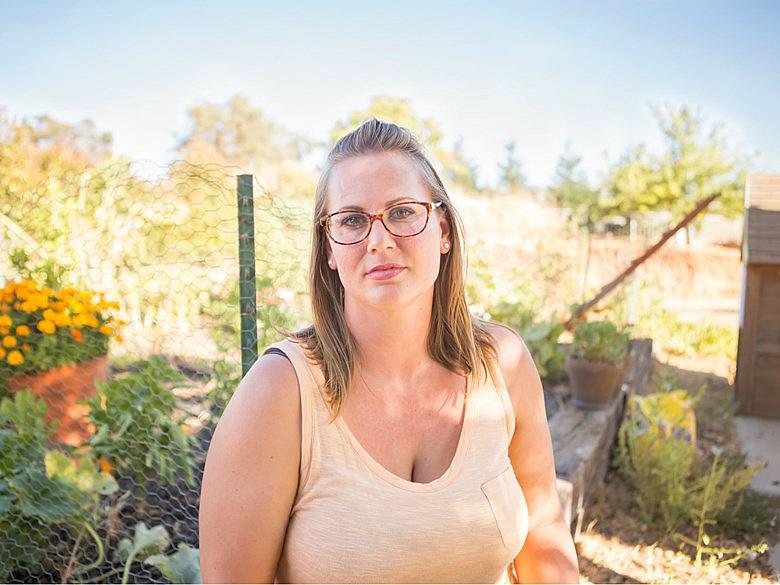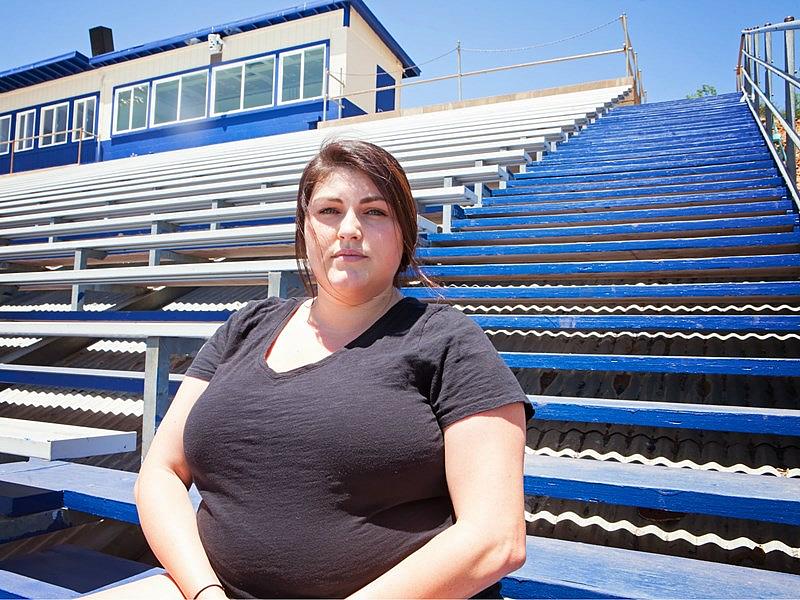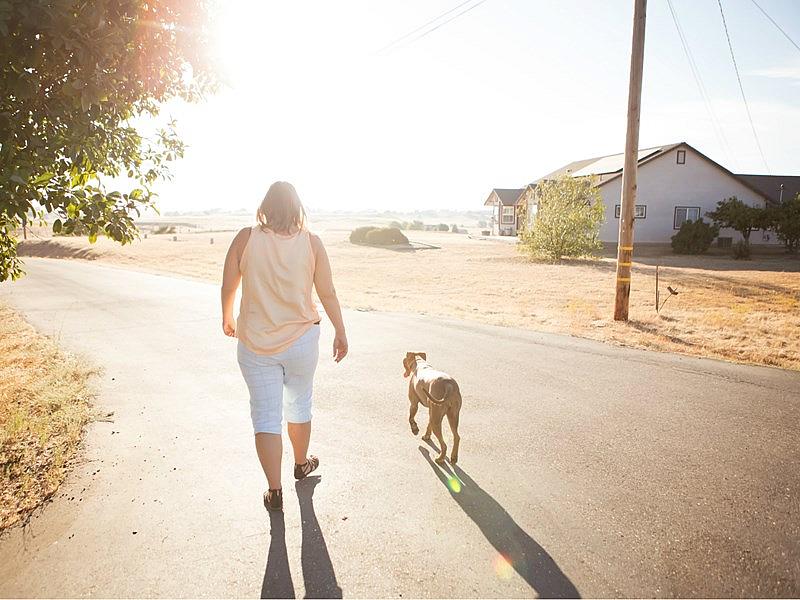The ‘S’ Word: How Suicide Is Devastating Amador County and Rural Communities
This story was produced as a project for the 2018 California Fellowship, a program of the Center for Health Journalism at USC Annenberg.
Other stories in this series include:
Why Veterans Face Heightened Suicide Risk in Amador County and Other Rural Areas
Where are the psychiatrists? Amador County and rural California hit hardest by physician shortage
How Suicide Trainings, Community Connections Could Patch Holes In Amador’s Mental Health Safety Net
Chronic Loneliness Is A Major Cause Of Suicide For Seniors, Especially in Rural California
Dying To Get Out: Stigma, ‘Copycat Effect’ Drive Youth Suicide In Rural Amador County
News Network: Rural Suicide Project Gets People Talking
Preventing Suicide, One Conversation At A Time
Q&A: How CapRadio Found Data On Suicides In Amador County
CapRadio Healthcare Reporter Examines Rural Suicide In Amador County

Amador County resident Ashley Moore was skeptical about the need for mental health treatment, until she needed it herself. (Vanessa S. Nelson/Capital Public Radio)
At Ashley Moore’s ranch in the Gold Rush town of Ione, a rambunctious dog runs around a side yard and a dozen or so chickens cluck in their pen. Her four-year-old daughter, Mia, curls up in a patio chair with an iPad. The 35-year-old, stay-at-home mom takes a brief moment to drink in the open plains and rustling trees that surround her property. She’s living what many would consider a perfect life: happy family, cozy home, network of friends. She says it took years of hard work to build this foundation.
And since Moore’s mental breakdown a few years ago, it’s been a delicate dance to keep it standing.
“People just think you’re OK because you’re functioning,” she said from a patio chair near her half-finished garden. “But really, on the inside, there’s this big black hole that’s just eating you.”
Mental illness isn’t visible. It doesn’t mottle flesh, shrivel muscles or cause a limp. It grows slowly and silently, chipping away at one’s vitality and sense of purpose. And if left unattended for too long, it can cause unbearable pain that drives people to end their own lives.
That’s happening with alarming frequency in California’s rural communities, where economic downturn, slim mental health resources, transportation barriers and high rates of substance abuse are creating breeding grounds for suicide.
There’s also a culture of silence. In Amador County, a former gold-mining community about an hour southeast of Sacramento, some people don’t even like to say the word suicide. Depression and other mental health issues are considered taboo, shameful. The stigma keeps many people from seeking help.
Amador has the third-highest suicide rate of any county in California — nearly three times the state average and twice that of Sacramento. The actual number of suicides is pretty small, and so the rate can fluctuate year-to-year. Despite that, the risk is clear: The top 20 counties on the list are some of the state’s most remote and least populous places.
Yet mental health activists say many Amador residents are in denial about the need for treatment.
Even Moore was skeptical. “I always thought that if people took antidepressants or wanted to hurt themselves, that they just weren’t strong-minded, they weren’t strong-willed. I used to think, ‘You don’t need that, just get over it, just be OK, just don’t be sad.'”
Then, it happened to her.
After high school, Moore became a paramedic. She ran on adrenaline — arriving on the scene for everything from broken toes and falling seniors to amputations and car wrecks.
But when her daughter was born, life became a struggle. “I got back to the work grind, and that’s when things started to get hard,” she said.
She tried to power through and keep it together. But the stress got to her. She felt like she wasn’t in control of her actions or emotions.
“We knew something was wrong with me, ’cause I’d started to get violent,” Moore said.
She would yell at her family for no reason, or overreact to small conflicts. The suicidal thoughts would pound in her brain: You’re a burden on your family, everyone would be better without you. She had to constantly fight the voices, telling herself she didn’t want to die.
But she lost control.
To escape the thoughts, she started on the long and windy road to town.
“Every time I would go by a telephone pole, I would literally have to say to myself ‘Don’t drive into it, don’t, stay on the road, just keep going, just gotta make it to Jackson, gotta make it to Jackson,’” she remembered. “One car, or one telephone pole of not being strong, I would have done it.”
“It’s overpowering.”
Drastic Changes
The fact that Moore couldn’t talk about what she was feeling — that she had to drive a half-hour to get to town, that she didn’t have a mental health provider to go to — is an example of the challenges that put someone in a rural area at heightened risk for suicide.
In Amador County, 85 people took their lives between 2010 and 2017, according to data from the local health department. Nearly 90 percent of people who killed themselves were men, most between age 40 and 70. More than a quarter were veterans, less than 10 percent were inmates at Mule Creek State Prison.
That data doesn’t include people like Rory Louderback Stratton, who spent her childhood in Amador but took her own life in Sacramento three years ago. She was 23.
Lynn Louderback still wishes she could have done more to save her daughter. “In my soul I know it was 100 percent preventable,” she said. “She didn’t get what she needed.”
Rory was popular, athletic and studious. Lynn said her daughter was always anxious, but seemed to have it under control. But when she moved to Sacramento for nursing school, her behavior changed in a drastic way.
Her mom said she got a new boyfriend and started hanging with a different crowd. She seemed wired, and was using a lot of drugs. Lynn recalled one especially concerning day when her daughter was visiting. “She looked terrible,” she said. “She was skinny, her face looked vacant.” And her daughter said something alarming:
“‘Mom, I know how to make my problems go away,’” Rory said. “‘If I wasn’t here.’”
“At my house?” Lynn responded.
“‘No, if I wasn’t alive anymore,’” Rory told her.
Afterward, Lynn was on alert. She started looking for a facility where Rory could get treatment.
The day Rory died, she was driving to Sacramento to see a counselor. She was supposed to call her mom when she got there safe. Instead, she went to her old apartment and shot herself.
Even years later, the pain persists. “It’s as unbelievable as the moment you find out,” she said. “I was in the store a couple weeks ago and thought, ‘This’ll be so cute on Rory, I’m gonna get this.’ … I don’t know what to feel. I feel so sorry that she was so sick.”
One year after Rory died, some of her friends created Amador County’s first-ever suicide awareness walk. This year, the proceeds funded the Rory Louderback-Stratton Memorial Scholarship for local students pursuing nursing or animal science, two of Rory’s greatest passions.
Kayla Blankenheim is a close friend, and the founder of the walk. She said people in Amador County have historically brushed mental illness under the rug, but Rory’s death was a wake-up call.
Kayla Blankenheim founded Amador County’s first-ever suicide awareness walk after her close friend, Rory Louderback Stratton, who spent her childhood in Amador, took her own life three years ago at age 23. (Vanessa S. Nelson/Capital Public Radio)
“If somebody killed themselves it was always kind of a hush-hush situation,” Blankenheim said. “They passed away, but no one ever wanted to divulge any detail or anything like that. … I don’t think anybody thinks anybody would go to those lengths.
“Hindsight’s always 20-20.”
Not Enough Doctors
The small-town stigma can make people reluctant to ask for help. If and when they do reach out, they’re likely to hit another wall: finding treatment.
Ashley Moore said that, even after she worked up the courage to call around to doctor’s offices, she was repeatedly turned down by therapists, who were overbooked.
“I left and just thought ‘That’s it, nobody cares, nobody’s gonna help me,’” she said. “This was a huge awakening to me, that when you ask for help, people don’t give it … until it gets bad.”
She eventually found a provider in Sacramento, and she said it’s helping a lot. But not everyone can make the drive, and the odds of getting help in Amador are pretty small.
The county hired a psychiatrist this summer, after more than a year of struggling to recruit someone — even after raising the salary again and again. Meanwhile, older doctors are retiring. Medical school graduates are competing for residencies at big-city research hospitals. Most don’t want to move to the country. It’s a common struggle in rural areas; a recent studyfrom the University of San Francisco found that, if current trends continue, there will be 41 percent fewer psychiatrists than needed in California by 2028.
There’s one psychiatrist in Amador County now, but her services are only for patients on Medi-Cal. That leaves people on Medicare, Veterans Affairs plans and private insurance with few options.
Bob Hartmann, who was the county public health officer for 16 years, says access was always a challenge. Now, he works at Sutter Amador Hospital and tries to teach doctors how to ask patients about mental illness.
"We sort of panic when we have to try to find a psychiatrist for our patients,” he said. “It’s just a very, very difficult thing to do. And we just feel really badly for the patients that there are not enough resources.”
When people in crisis show up in the Sutter Amador emergency room, they don’t get transferred to a psych bed or a specialized institution the way they do in cities. At least, not quickly.
Emergency room staff say they hold people for up to seven days, often consulting with psychiatrists through video to figure out how to prescribe medication. They make calls until they find the patient a psychiatric bed in Sacramento, Elk Grove, the Bay Area, or wherever there’s an opening.
For people who are already reluctant to see a therapist, the thought of being sent to a faraway facility, or having to drive an hour, can be an insurmountable barrier.
The Gun Factor
When someone loses their will to live and starts planning to take their own life, they’re in what doctors call a suicidal crisis. It’s considered a medical emergency — and it’s probably what Moore was going through that day in her car.
Experts say a suicidal crisis is more likely to lead to an actual suicide when the person has access to a gun.
“It’s such a deadly method, just having a firearm available is a risk factor in itself,” said Veronica Pear, a research data analyst at UC Davis who’s been looking at the way guns are used in urban versus rural places.
“On average, rural areas had three times higher rates of firearm suicide than metropolitan areas,” she said. “But when we looked at homicide there was really no difference.”
A group called the Gun Shop project wants to bring information about suicide prevention to gun stores in rural areas to help business owners and firearm enthusiasts better look out for one another. They’ve already started in Shasta and Solano counties, and they’ve got Amador and Calaveras on the list. They want people to lock up guns if they live with someone at risk for suicide.
And Garen Wintemute, also of UC Davis, says friends and family can intervene if they feel someone isn’t stable enough to hold onto a firearm.
“Basically, the idea is ‘Bob, how about I babysit your guns for a while?’” Wintemute explained of how he might step in. “It would be done [ideally] voluntarily, but there are times when an individual is in serious crisis and doesn’t recognize it.”
Amador County is distributing free gun locks at suicide awareness events this fall.
Ashley Moore said that, after her breakdown, she asked her husband to change the code on their gun safe.
“I knew that, if I wasn’t in my right mind when I was having a dark day, if I had access to one, I’d be more likely to use it,” she said. “And I don’t want to die. I just don’t want to feel like this anymore. So, that’s what I’m doing, is trying to figure out how to live a life that allows me to feel better.”
Activists in Amador said feeling better starts with talking about mental illness — including depression — and connecting to other people with similar experiences.
It’s important for friends and family members to listen to people, and have the suicide hotline number ready.
But they also need to be vigilant about looking for red flags.
Knowing The Signs
Trixxie Smith is a single mom in her fifties who’s also a former drug abuser turned peer-support specialist. She wears a bright green ribbon that reads “Know The Signs,” and she says she wears it every day. It’s a way to get people to talk to her about suicide, she said.
“And that opens a dialogue,” Smith said. “People are afraid to talk about it. But if you make yourself available and let people know you’re willing to talk, they will.”
So, what are the signs? If someone talks about wanting to die, feels hopeless or trapped, or says they’re in pain. Or if they’re withdrawing or feeling isolated, sleeping too much or too little. (You can find more about these red flags here.)
“Talking does make it feel better, even if people don’t say anything,” Moore said. “It’s just the stigma.”
Ashley Moore says she still has bad days, but she has good days, too. (Vanessa S. Nelson/Capital Public Radio)
But she says she’s past that now: “I don’t care what people think. I don’t care what people say. … But a lot of people aren’t lucky. A lot of people don’t get the help. A lot of people don’t make it out alive. And I’m glad that I have.”
Moore still has bad days, but she has good days, too.
“I just like to think that it won’t be like this forever,” she said. “I want to see my kids grow up. I want to see them get married. I’d like to be the grandma that spoils them and sends them back home to their mom and dad. It’s hard to see that far, but man, I want to make it there.”
If you’re thinking about suicide or know someone who is, call the national suicide prevention lifeline at 1-800-273-8255.
Music is “Low Light Switch” by Blue Dot Sessions.
[This story was originally published by Capital Public Radio.]

